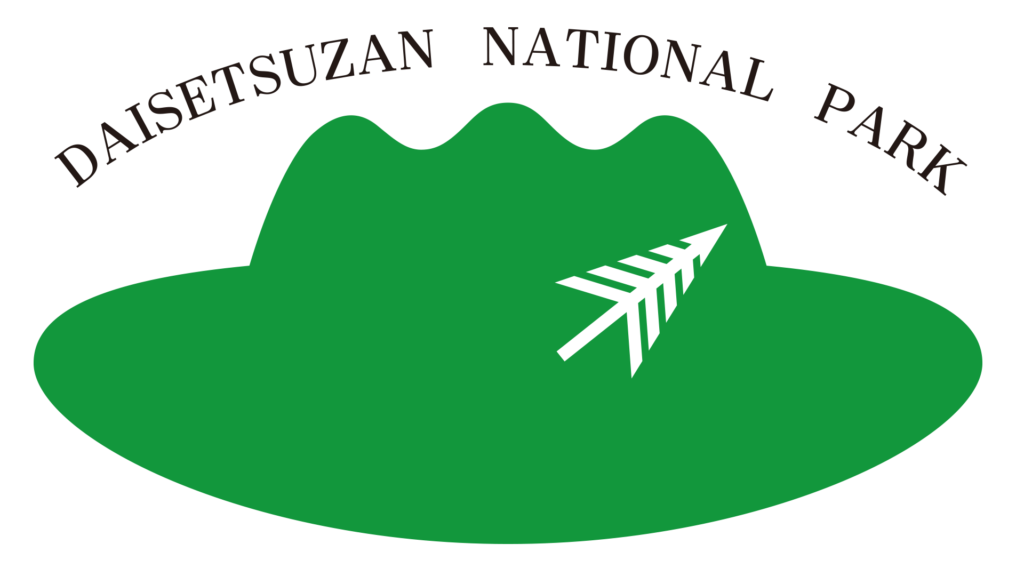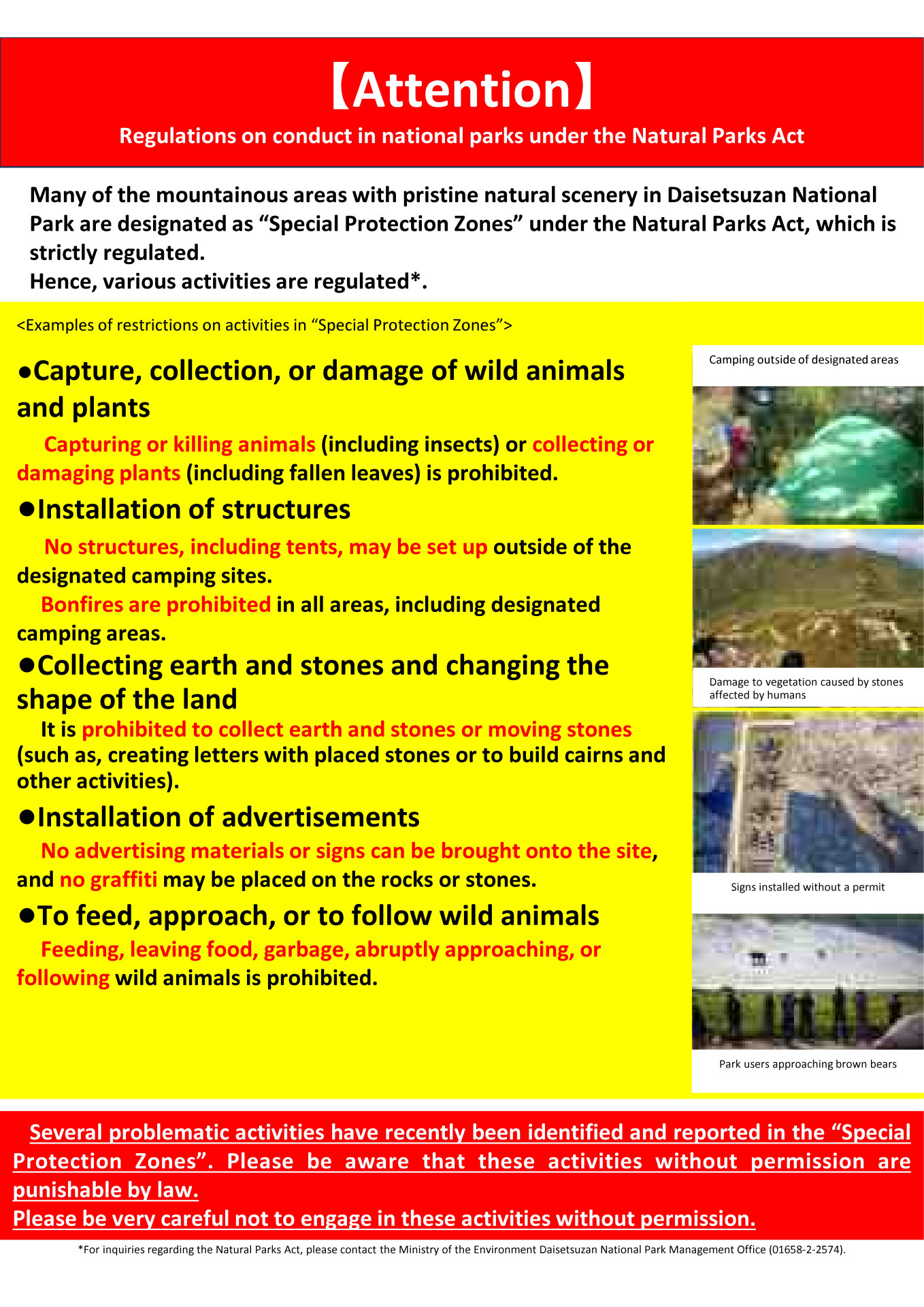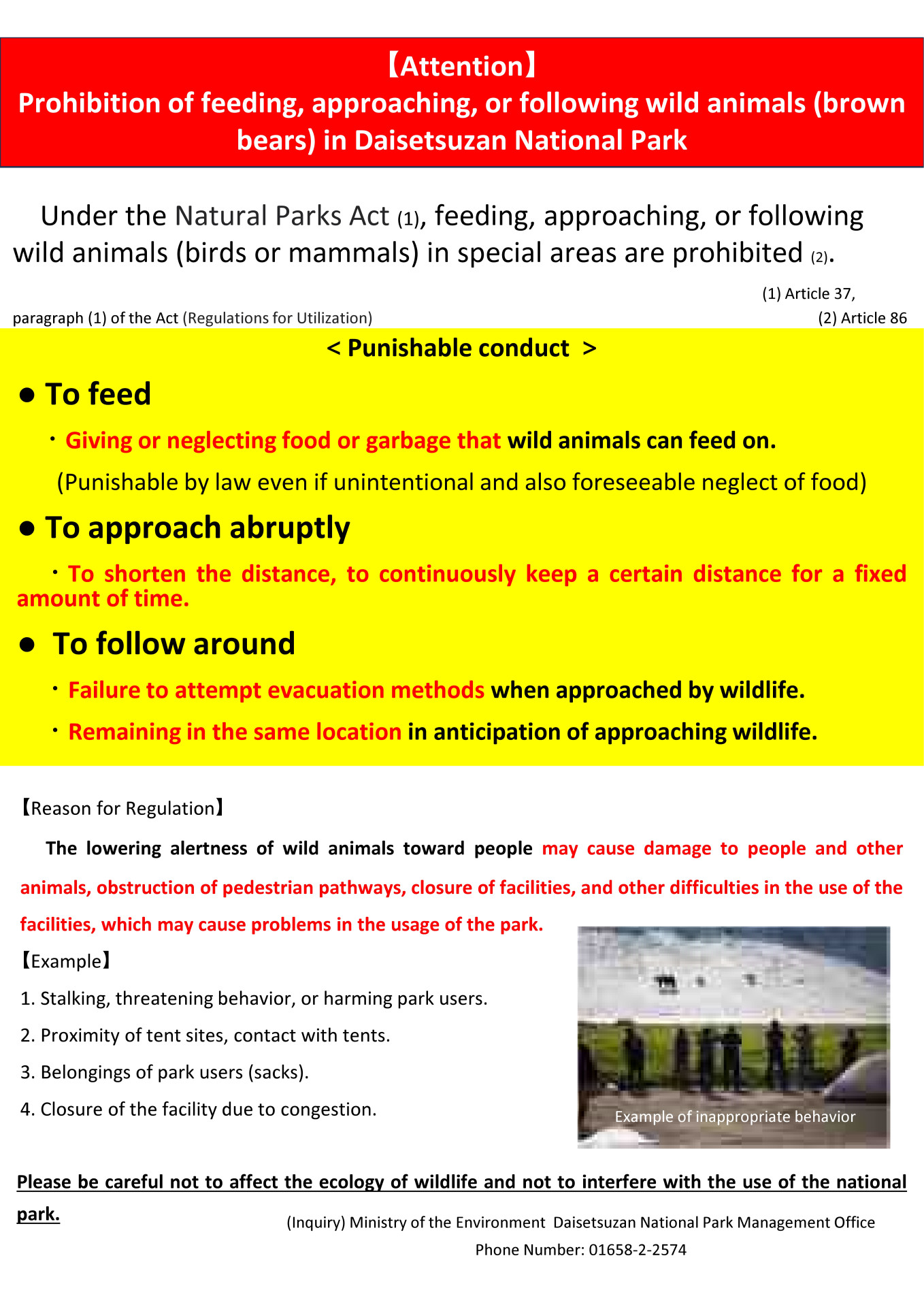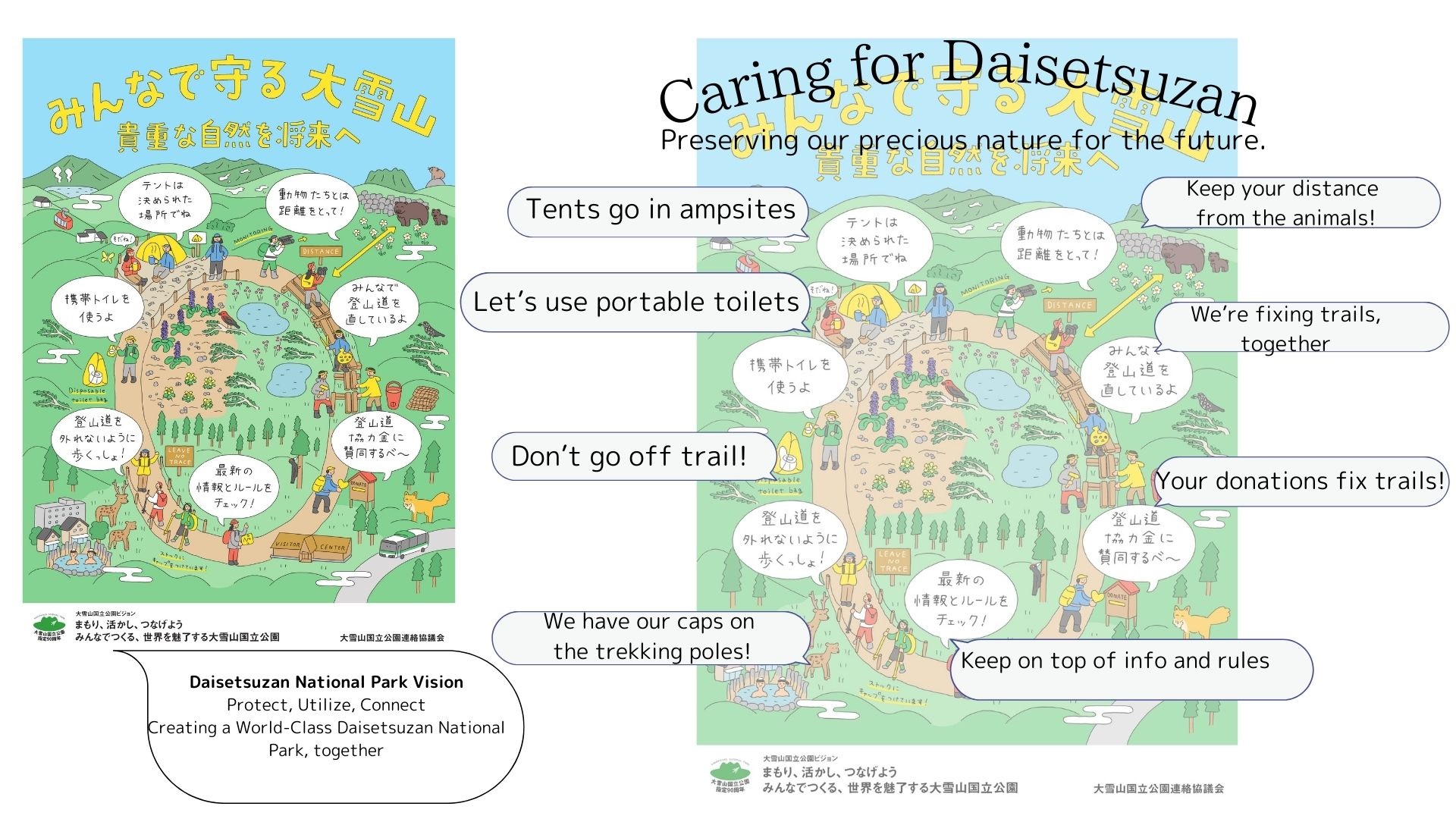
〈Daisetsuzan Conservation Rules〉
①Rules for hiking in alpine zones
- In order to avoid damaging vegetation and disturbing soil, do not walk off trail, and keep to marked route, if applicable, when crossing snow patches.
- In order to avoid damaging hiking trails and surrounding vegetation and soil, tip protector caps should be used on trekking poles.
- To reduce damage on the trails due to trekking pressure, avoid walking on paths that break up the soil or causes rocks to fall.
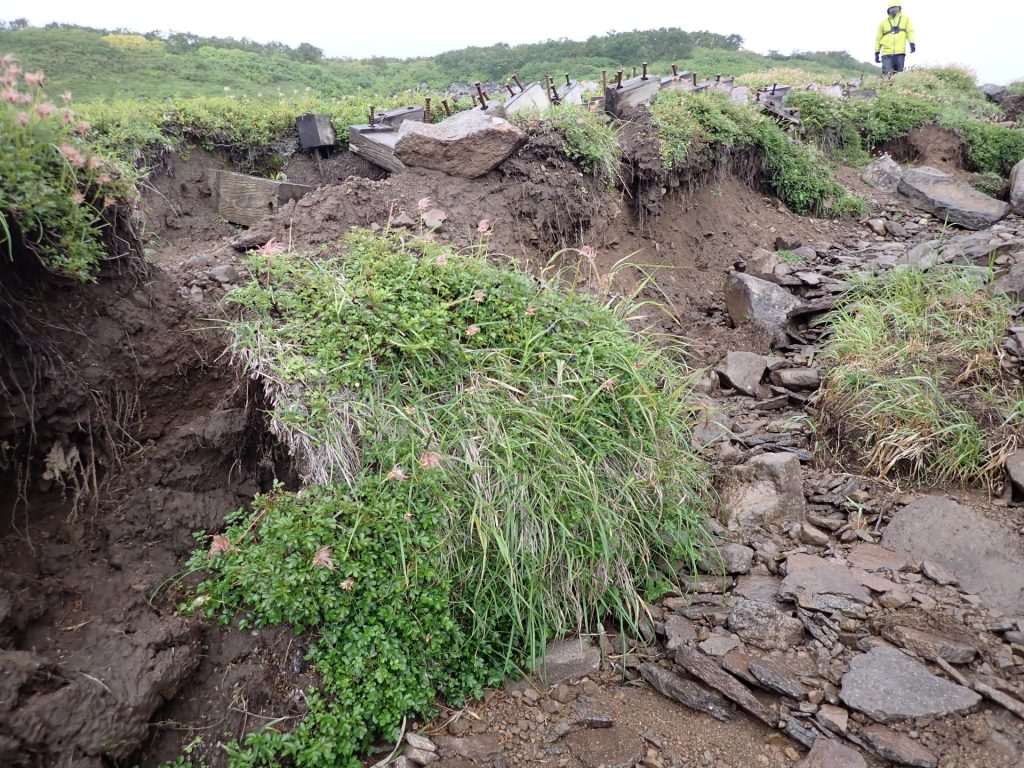
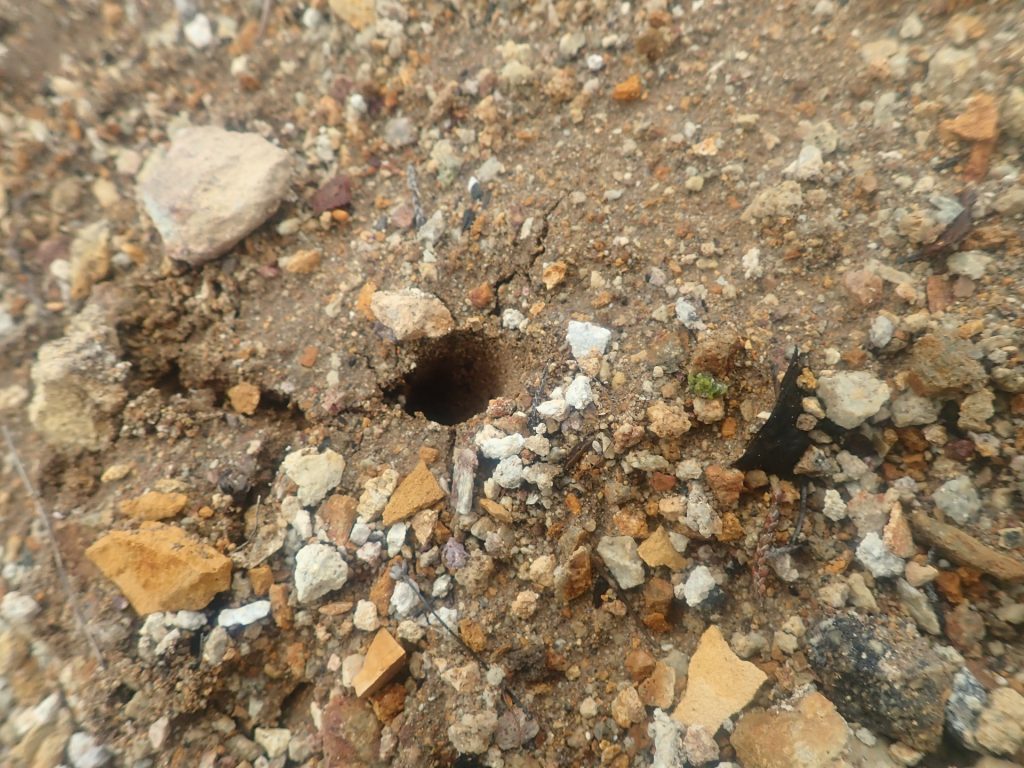
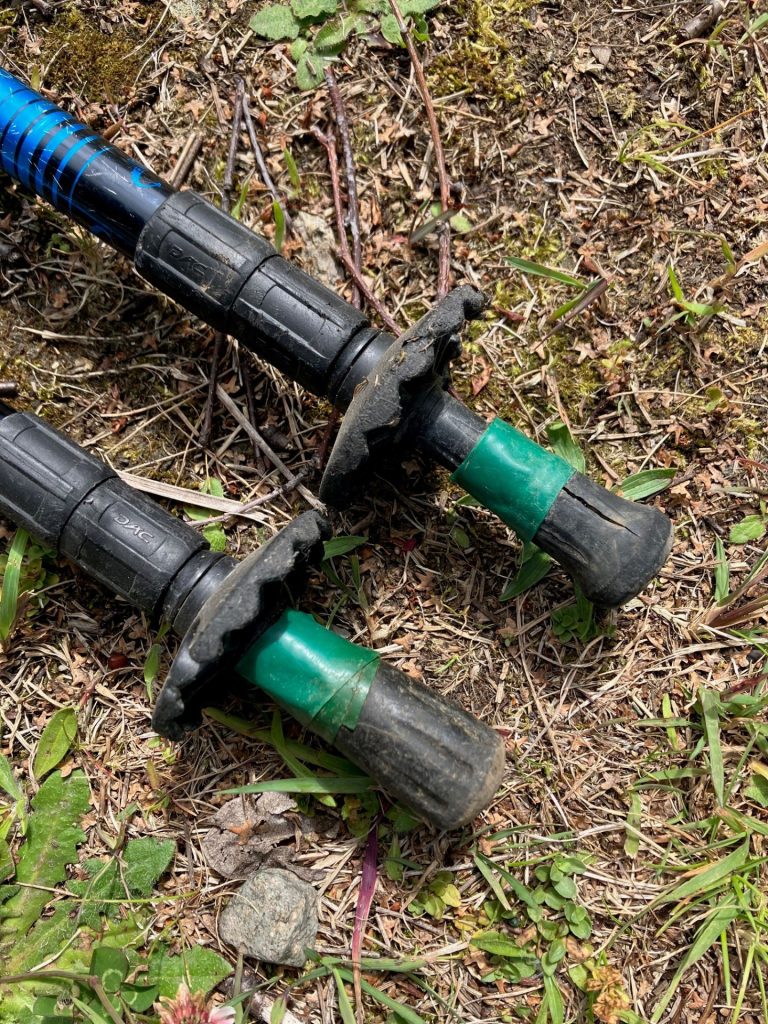
<A background to the rules>
When hikers leave hiking trails in order to urinate, take a rest, or take photographs, they naturally end up trampling and damaging vegetation. This leads to the creation of bare soil areas, and the destruction of Daisetsuzan’s valuable and delicate periglacial (permafrost) terrain.
Daisetsuzan’s soil is a fragile remnant of ancient volcanic eruptions. Hiking on this soil leads to erosion, damaging soil further.
Please keep to the trail, and when encountering snow patches, keep to the roped and marked route across the snow (do not skirt around the snow). Follow all advice and guidance of rangers.
Late-season spring skiing on remaining snow patches should be avoided if access to the snow patch requires crossing ground not covered by snow (unless the snow patch can be directly accessed via a hiking trail). Make sure that the snow patch is deep enough that skiing will not damage vegetation beneath it.
Please note that in certain cases, trampling alpine vegetation may constitute illegal plant damage as per the Natural Parks Act regulations.
<Law and Regulations>
Article 21, paragraph (3) of the Natural Parks Act (plant damage)
② Rules for tent use
- Do not camp outside of designated campsite locations. Camping outside designated campsites can cause vegetation damage, the creation of bare patches of soil, and disrupt animal (such as brown bear) ecologies.
- Do not light fires.
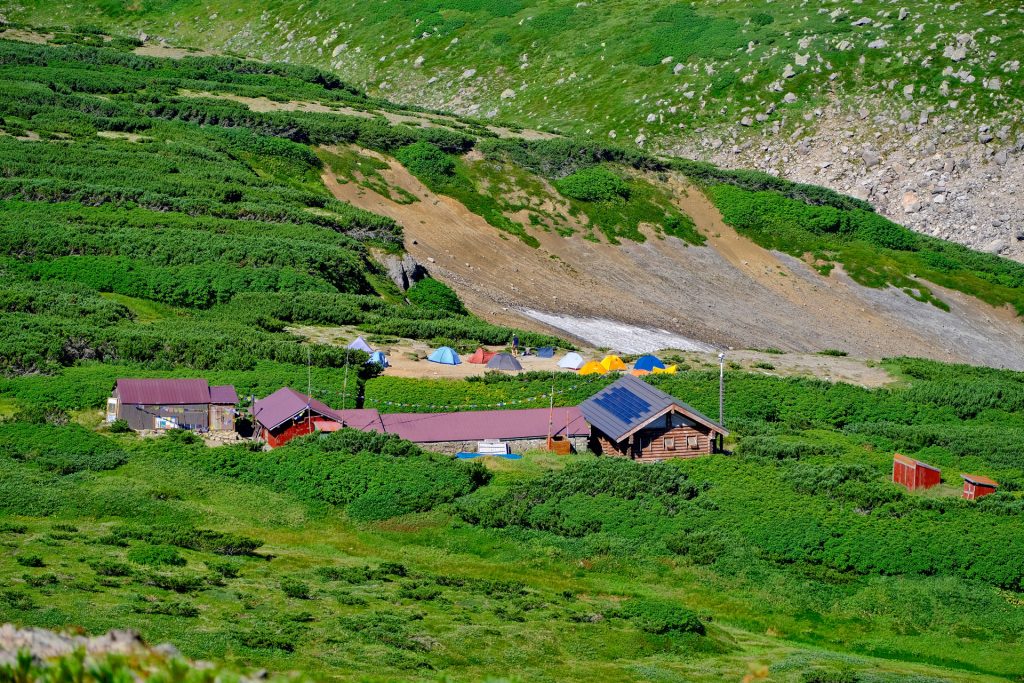
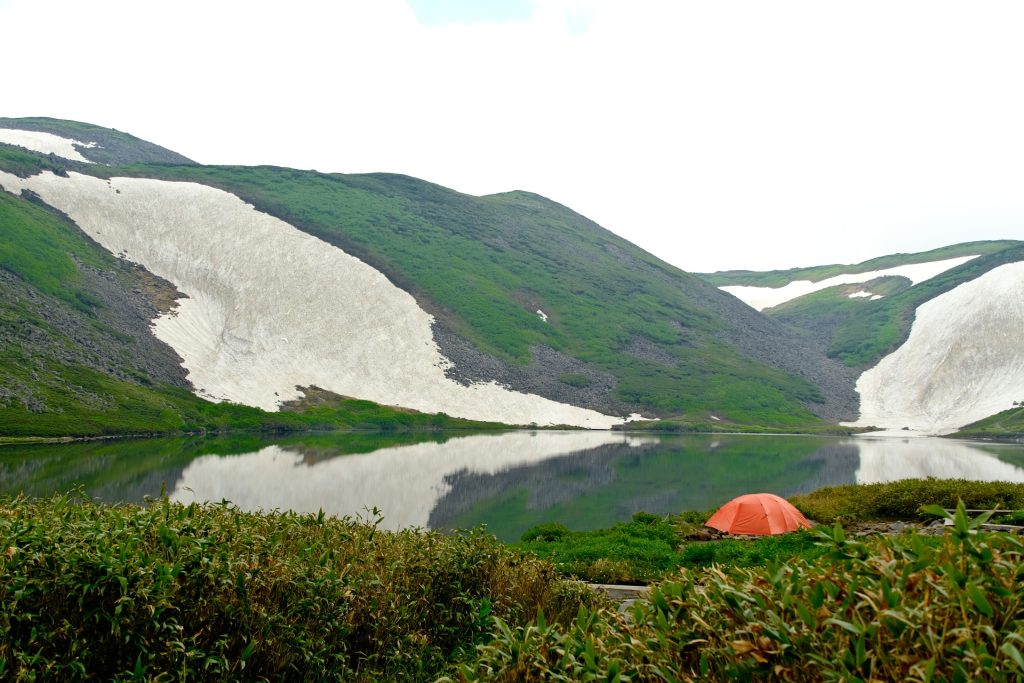
<A background to the rules>
Unregulated camping causes destruction of vegetation. It also leads to brown bears being attracted to a difficult-to-pinpoint multitude of locations, which makes risk management difficult within the Daisetsuzan National Park. For this reason, the relevant administrative agencies (Ministry of the Environment, Forestry Agency, Hokkaido and municipalities) have established the current designated campsites.
The designated campsites are listed below. Tents cannot be erected in areas other than these. Please be aware that campsites have limited space. Consider making plans to avoid busy periods.
【Designated campsites】
Mt.Kurodake,Ura-asahi,Mt.Hakuundake, Mt.Chubetsudake,Buyonuma,Hisagonuma,Tomraushi Minami-numa,,Numanohara-Onuma,,Mae-tengu,Kotengu no Coru,,Futago-ike Pond,,Mt.Bieifuji, and Mt.Kamihorokamettoku.
*The underlined campsites do not have toilets. In these campsites, use portable toilets (W.A.G. bags).
Please avoid stepping on or trampling vegetation outside campsites. Also, take steps to avoid impacting animal ecologies (such as brown bears). Keep your distance from animals, beware of creating smells that might attract animals, and do not leave food or other items that might attract animals.
Note that the Natural Parks Act prohibits campfires in Special Protection Zones of national parks, including the designated campsites in Daisetsuzan.
<Law and Regulations>
Article 21, paragraph (3) of the Natural Parks Act (installation of structures and campfires).
③ Rules for using portable toilets
- In order to protect the natural environment and landscape, portable toilets should be used. Hikers should not leave behind human waste or toilet paper.
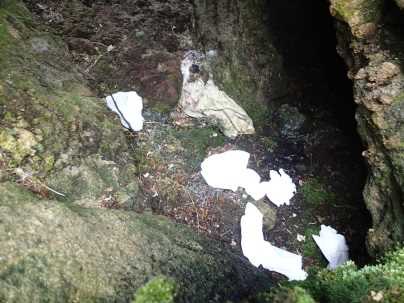
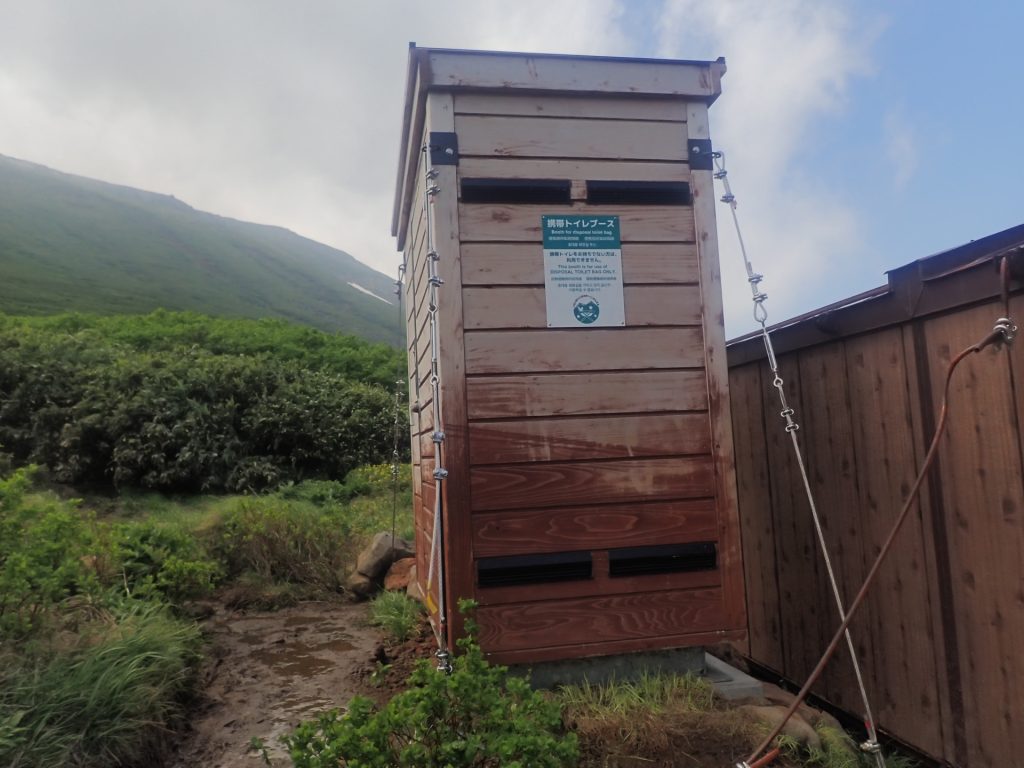
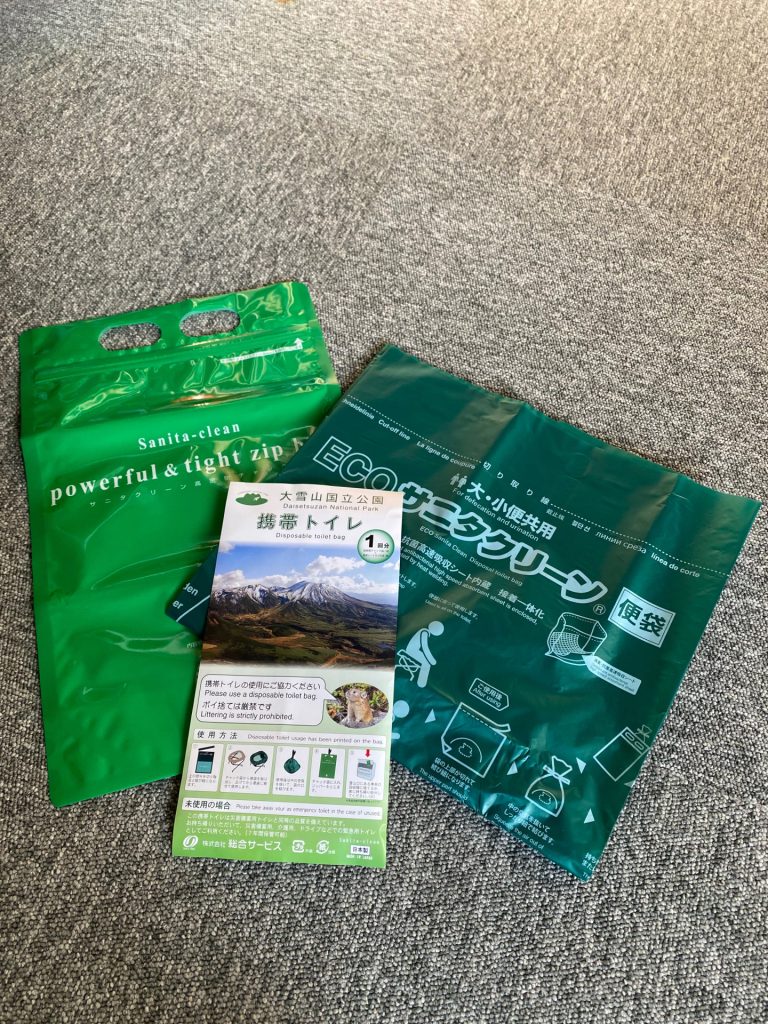
<A background to the rules>
For a long time now, Daisetsuzan National Park has struggled with the problem of human waste around designated campsites and on hiking trails. This problem is yet to be resolved.
Leaving human waste on hiking trails is prohibited by the Natural Parks Act.
To protect the natural environment and landscape, and to avoid impacting other park users’ experiences, please use portable toilets in areas where there are no permanent toilets. Do not leave behind human waste or toilet paper.This advice is particularly crucial for areas such as campsites and water source areas. Use portable toilets (where no toilets are available), and under no circumstances should hikers add to the pollution problem by leaving human waste behind.
Please dispose of used portable toilets in the disposal boxes located at each trailhead.
<Law and Regulations>
Article 37, paragraph (1) of the Natural Parks Act (Regulations for Utilization)
④Wildlife rules
- In order not to affect the ecology of wildlife, keep your distance from wild animals, do not leave or give food, and do not bring pets into the Park.
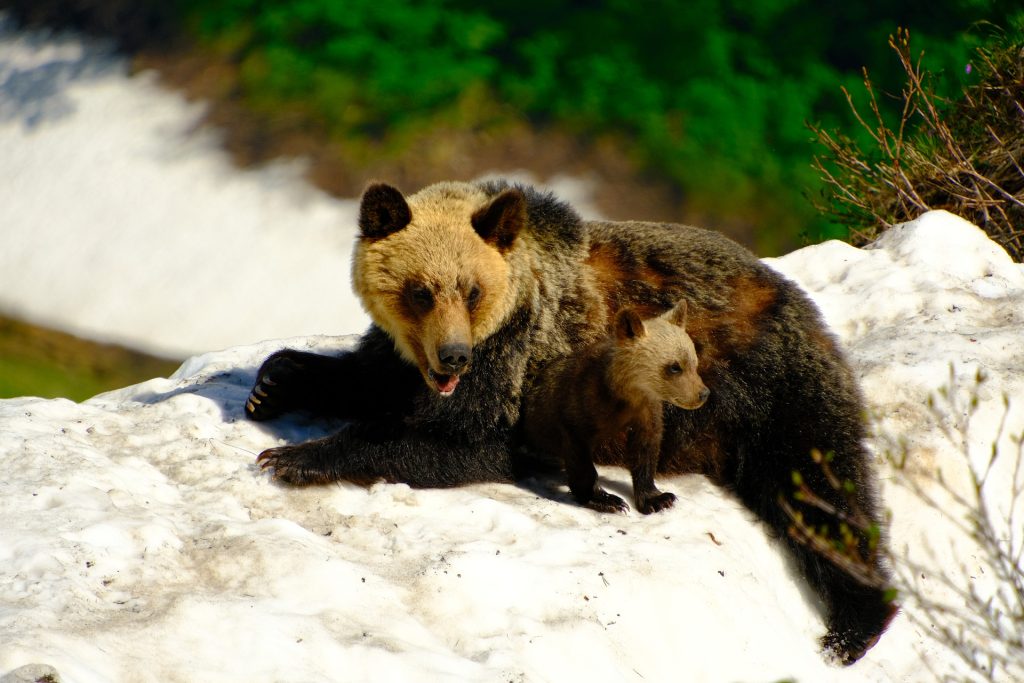

<A background to the rules>
The Natural Parks Act prohibits the feeding, approaching, or stalking of wild animals (birds or mammals) in Specially Protected Areas of national parks.
A decrease in wild animals’ fear of humans could risk damage to people, the obstruction of trails, closure of facilities, and other difficulties which may hinder the useage of the Park.
In order not to affect the behavior of wild animals, please keep your distance from them, refrain from giving or leaving food or garbage, and do not approach or follow wild animals for the purpose of taking photos.
Also, do not bring pets into the Park. Their noises, smells, and other things can be perceived as threats by animals. There is also the risk that they may provoke brown bears.
<Law and Regulations>
Article 37, paragraph (1) of the Natural Parks Act (Regulations for Utilization)
【Attention】
